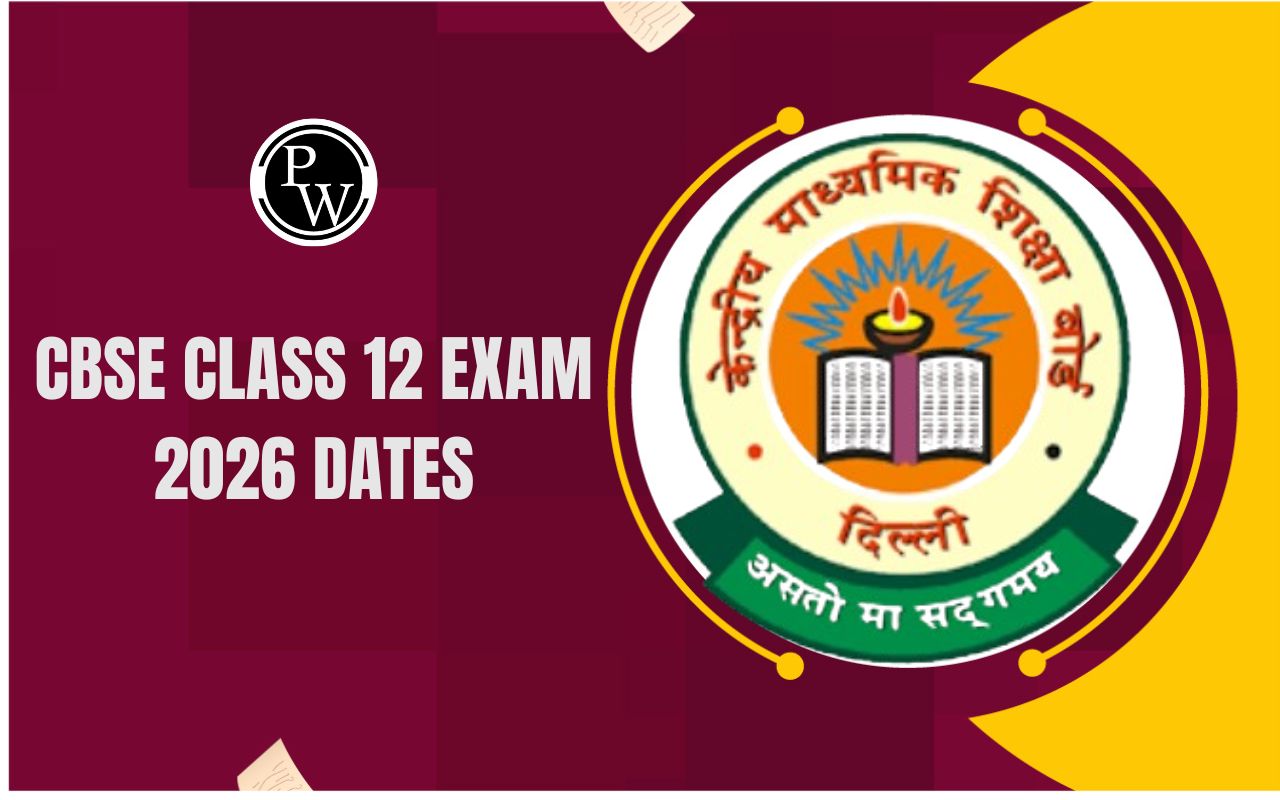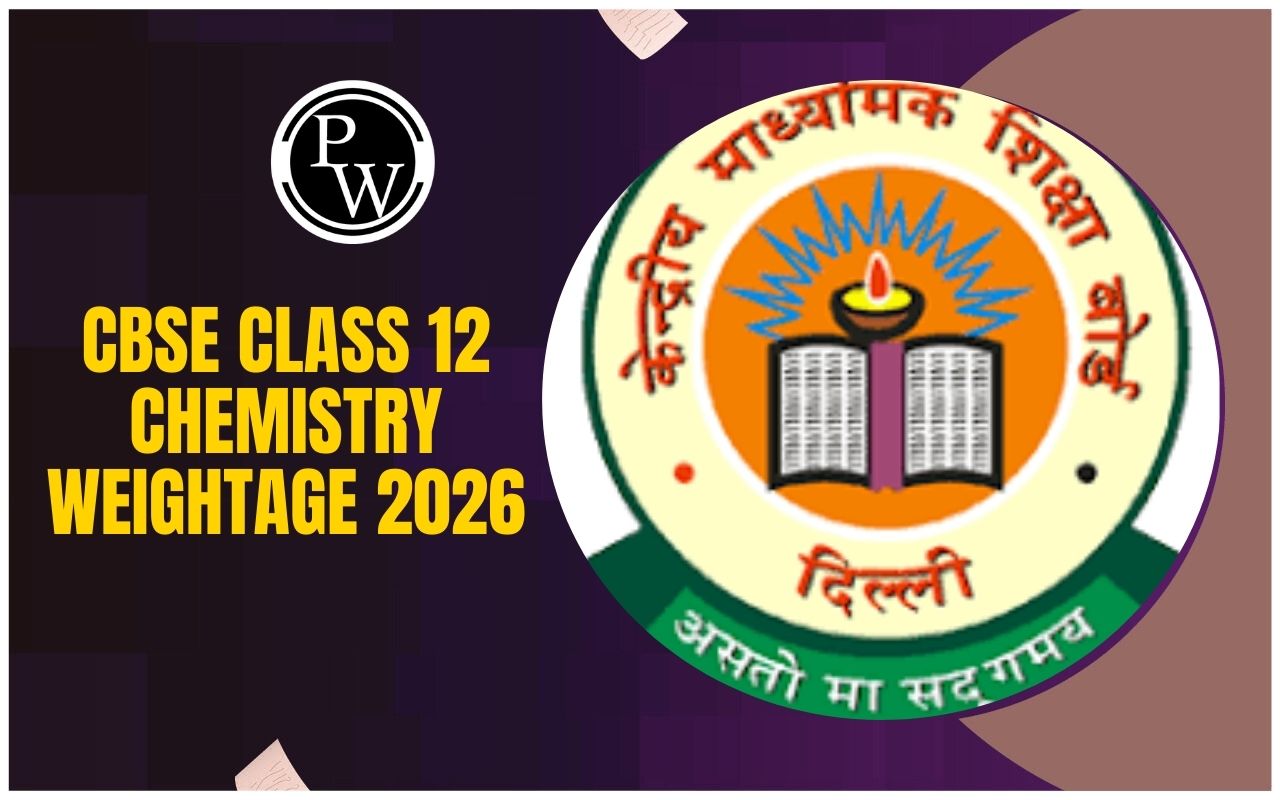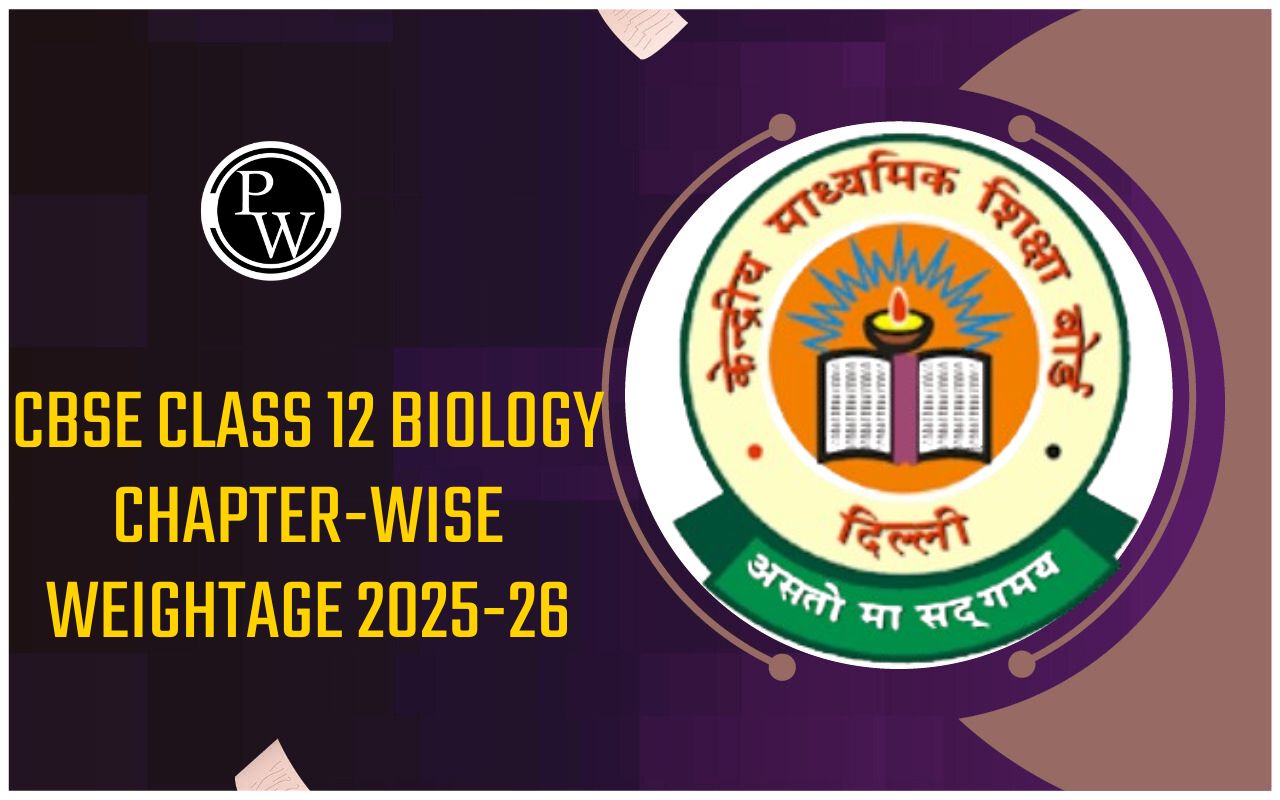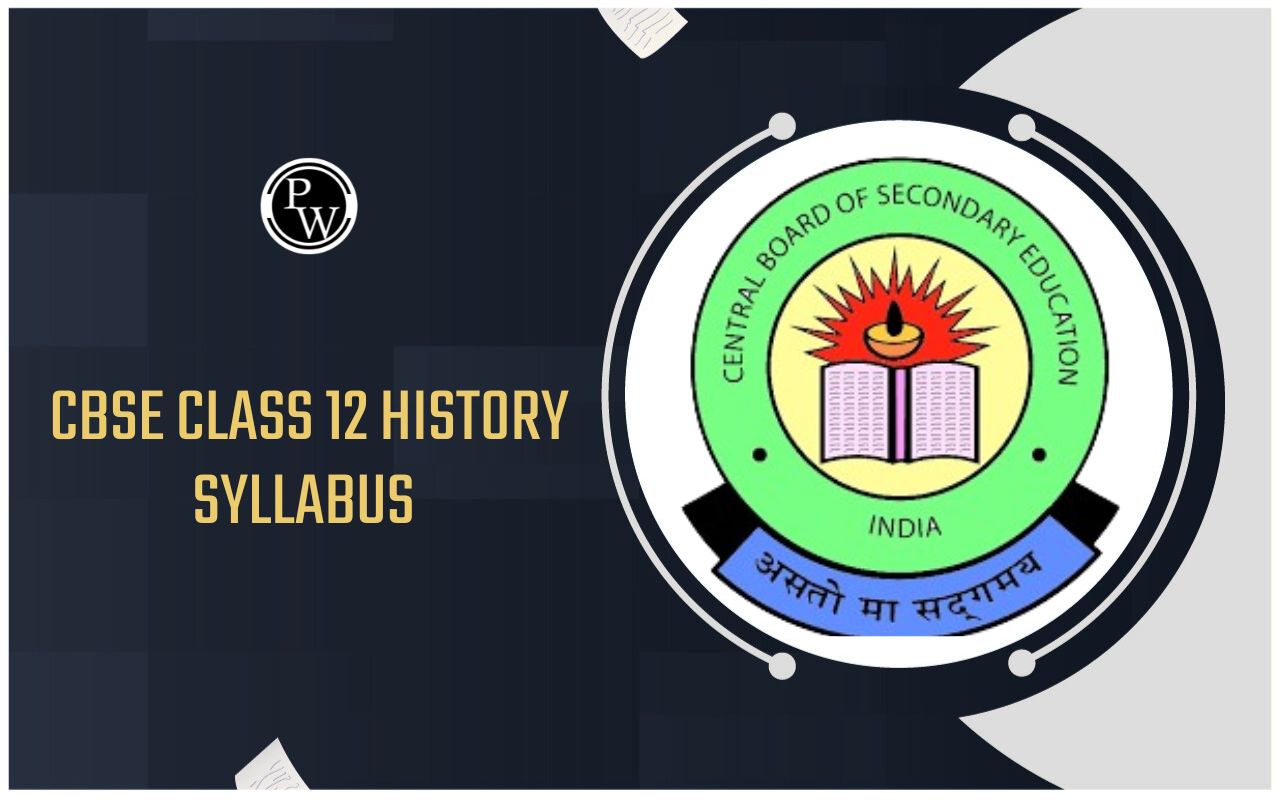
NCERT Solutions for Class 12 Maths Chapter 12 Exercise 12.2
NCERT Solutions for Class 12 Maths Chapter 12 Exercise 12.2 Linear Programming is prepared by the academic team of Physics Wallah. We have prepared NCERT Solutions for all exercise of chapter 12. Below is step by step solutions of all questions given in the NCERT Solutions for Class 12 Maths Chapter 12 Exercise 12.2.NCERT Solutions for Class 12 Maths Chapter 12 Exercise 12.1
NCERT Solutions for Class 12 Maths Chapter 12 Exercise 12.2 Overview
NCERT Solutions for Class 12 Maths Chapter 12 Exercise 12.2 cover several important topics. It is highly recommended for students to review each topic thoroughly in order to gain a comprehensive understanding of the concepts taught in the chapter and make optimal use of the provided solutions. These solutions are the result of dedicated efforts by the Physics Wallah teachers aimed at assisting students in grasping the concepts covered in this chapter. By going through and practicing these solutions, the objective is for students to achieve excellent results in their exams effortlessly.NCERT Solutions for Class 12 Maths Chapter 12 Exercise 12.2
Solve The Following Questions of NCERT Solutions for Class 12 Maths Chapter 12 Exercise 12.2:
Question 1. Reshma wishes to mix two types of food P and Q in such a way that the vitamin contents of the mixture contain at least 8 units of vitamin A and 11 units of vitamin B. Food P costs Rs. 60/kg and Food Q costs Rs. 80/kg. Food P contains 3 units/kg of vitamin A and 5 units/kg of vitamin B while Food Q contains 4 units/kg of vitamin A and 2 units/kg of vitamin B. Determine the minimum cost of the mixture. Solution : Let the mixture contain x kg of food P and y kg of food Q. Therefore, x ≥ 0 and y ≥ 0 The given information can be compiled in a table as follows.|
Vitamin A (units/kg) |
Vitamin B (units/kg) |
Cost (Rs/kg) |
|
|
Food P |
3 |
5 |
60 |
|
Food Q |
4 |
2 |
80 |
|
Requirement (units/kg) |
8 |
11 |
 It can be seen that the feasible region is unbounded.
The corner points of the feasible region are A(8/3,0) ,B(2,1/2) and C(0,11/2)
The values of Z at these corner points are as follows.
It can be seen that the feasible region is unbounded.
The corner points of the feasible region are A(8/3,0) ,B(2,1/2) and C(0,11/2)
The values of Z at these corner points are as follows.
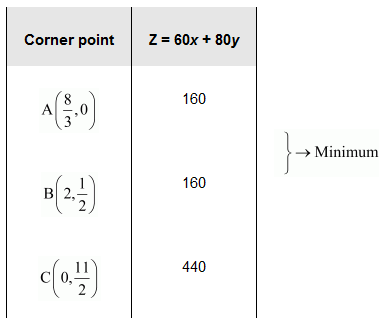 As the feasible region is unbounded, therefore, 160 may or may not be the minimum value of Z.
For this, we graph the inequality, 60
x
+ 80
y
< 160 or 3
x
+ 4
y
< 8, and check whether the resulting half plane has points in common with the feasible region or not.
It can be seen that the feasible region has no common point with 3
x
+ 4
y
< 8
Therefore, the minimum cost of the mixture will be Rs 160 at the line segment joining the points (8/3,0) and (2,1/2).
As the feasible region is unbounded, therefore, 160 may or may not be the minimum value of Z.
For this, we graph the inequality, 60
x
+ 80
y
< 160 or 3
x
+ 4
y
< 8, and check whether the resulting half plane has points in common with the feasible region or not.
It can be seen that the feasible region has no common point with 3
x
+ 4
y
< 8
Therefore, the minimum cost of the mixture will be Rs 160 at the line segment joining the points (8/3,0) and (2,1/2).
Books for CBSE Class 12 Preparation
Question 2. One kind of cake requires 200g of flour and 25 g of fat and another kind of cake requires 100 g of flour and 50 g of fat. Find the maximum number of cake which can be made from 5 kg of flour and 1 kg of fat assuming that there is no shortage of the other ingredients used in making the cakes. Solution : Let there be x cakes of first kind and y cakes of second kind. Therefore, x ≥ 0 and y ≥ 0 The given information can be complied in a table as follows.|
Flour (g) |
Fat (g) |
|
|
Cakes of first kind, x |
200 |
25 |
|
Cakes of second kind, y |
100 |
50 |
|
Availability |
5000 |
1000 |
 Total numbers of cakes, Z, that can be made are, Z =
x
+
y
The mathematical formulation of the given problem is
Maximize Z =
x
+
y
… (1)
subject to the constraints,
Total numbers of cakes, Z, that can be made are, Z =
x
+
y
The mathematical formulation of the given problem is
Maximize Z =
x
+
y
… (1)
subject to the constraints,
 The feasible region determined by the system of constraints is as follows
The feasible region determined by the system of constraints is as follows
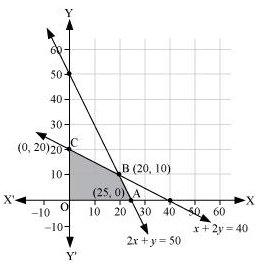 The corner points are A (25, 0), B (20, 10), O (0, 0), and C (0, 20).
The values of Z at these corner points are as follows.
The corner points are A (25, 0), B (20, 10), O (0, 0), and C (0, 20).
The values of Z at these corner points are as follows.
 Thus, the maximum numbers of cakes that can be made are 30 (20 of one kind and 10 of the other kind).
Question
3. A factory makes tennis rackets and cricket bats. A tennis racket takes 1.5 hours of machine time and 3 hours of craftman’s time in its making while a cricket bat takes 3 hours of machine time and 1 hour of craftman’s time. In a day, the factory has the availability of not more than 42 hours of machine time and 24 hours of craftman’s time.
(i) What number of rackets and bats must be made if the factory is to work at full capacity?
(ii) If the profit on a racket and on a bat is Rs. 20 and Rs. 10 respectively, find maximum profit of the factory when it works at full capacity.
Solution :
(i) Let the number of rackets and the number of bats to be made be
x
and
y
respectively.
The machine time is not available for more than 42 hours.
∴ 1.5x + 3y ≤ 42 ....(1)
The craftsman’s time is not available for more than 24 hours.
∴ 3x + y ≤ 24 ......(2)
The factory is to work at full capacity. Therefore,
1.5
x
+ 3
y
= 42
3
x
+
y
= 24
On solving these equations, we obtain
x
= 4 and
y
= 12
Thus, 4 rackets and 12 bats must be made.
(i) The given information can be complied in a table as follows.
Thus, the maximum numbers of cakes that can be made are 30 (20 of one kind and 10 of the other kind).
Question
3. A factory makes tennis rackets and cricket bats. A tennis racket takes 1.5 hours of machine time and 3 hours of craftman’s time in its making while a cricket bat takes 3 hours of machine time and 1 hour of craftman’s time. In a day, the factory has the availability of not more than 42 hours of machine time and 24 hours of craftman’s time.
(i) What number of rackets and bats must be made if the factory is to work at full capacity?
(ii) If the profit on a racket and on a bat is Rs. 20 and Rs. 10 respectively, find maximum profit of the factory when it works at full capacity.
Solution :
(i) Let the number of rackets and the number of bats to be made be
x
and
y
respectively.
The machine time is not available for more than 42 hours.
∴ 1.5x + 3y ≤ 42 ....(1)
The craftsman’s time is not available for more than 24 hours.
∴ 3x + y ≤ 24 ......(2)
The factory is to work at full capacity. Therefore,
1.5
x
+ 3
y
= 42
3
x
+
y
= 24
On solving these equations, we obtain
x
= 4 and
y
= 12
Thus, 4 rackets and 12 bats must be made.
(i) The given information can be complied in a table as follows.
|
Tennis Racket |
Cricket Bat |
Availability |
|
|
Machine Time (h) |
1.5 |
3 |
42 |
|
Craftsman’s Time (h) |
3 |
1 |
24 |
 The corner points are A (8, 0), B (4, 12), C (0, 14), and O (0, 0).
The values of Z at these corner points are as follows.
The corner points are A (8, 0), B (4, 12), C (0, 14), and O (0, 0).
The values of Z at these corner points are as follows.
 Thus, the maximum profit of the factory when it works to its full capacity is Rs 200.
Thus, the maximum profit of the factory when it works to its full capacity is Rs 200.
Question 4. A manufacturer produces nuts and bolts. It takes 1 hour of work on machine A and 3 hours on machine B to produce a package of nuts. It takes 3 hours on machine A and 1 hour on machine B to produce a package of bolts. He earns a profit of Rs. 17.50 per package on nuts and Rs. 7.00 per package on bolts. How many packages of each should be produced each day so as to maximize his profit, if he operates his machines for at the most 12 hours a day?
Solution :
Let the manufacturer produce x packages of nuts and y packages of bolts. Therefore, x ≥ 0 and y ≥ 0 The given information can be compiled in a table as follows.|
Nuts |
Bolts |
Availability |
|
|
Machine A (h) |
1 |
3 |
12 |
|
Machine B (h) |
3 |
1 |
12 |
 The corner points are A (4, 0), B (3, 3), and C (0, 4).
The values of Z at these corner points are as follows.
The corner points are A (4, 0), B (3, 3), and C (0, 4).
The values of Z at these corner points are as follows.
 The maximum value of Z is Rs 73.50 at (3, 3).
Thus, 3 packages of nuts and 3 packages of bolts should be produced each day to get the maximum profit of Rs 73.50.
Question
5. A factory manufacturers two types of screws, A and B. Each type of screw requires the use of two machines, an automatic and a hand operated. It takes 4 minutes on the automatic and 6 minutes on hand operated machines to manufacture a package of screw A, while it takes 6 minutes on automatic and 3 minutes on hand operated machines to manufacture a package of screws B. Each machine is available for at the most 4 hours on any day. The manufacturer can sell a package of screws A at a profit of Rs. 7 and screws B at a profit of Rs. 10. Assuming that he can sell all the screws he manufactures, how many packages of each type should the factory owner produce a day in order to maximize his profit? Determine the maximum profit.
Solution :
Let the factory manufacture
x
screws of type A and
y
screws of type B on each day. Therefore,
x
≥ 0 and
y
≥ 0
The given information can be compiled in a table as follows.
The maximum value of Z is Rs 73.50 at (3, 3).
Thus, 3 packages of nuts and 3 packages of bolts should be produced each day to get the maximum profit of Rs 73.50.
Question
5. A factory manufacturers two types of screws, A and B. Each type of screw requires the use of two machines, an automatic and a hand operated. It takes 4 minutes on the automatic and 6 minutes on hand operated machines to manufacture a package of screw A, while it takes 6 minutes on automatic and 3 minutes on hand operated machines to manufacture a package of screws B. Each machine is available for at the most 4 hours on any day. The manufacturer can sell a package of screws A at a profit of Rs. 7 and screws B at a profit of Rs. 10. Assuming that he can sell all the screws he manufactures, how many packages of each type should the factory owner produce a day in order to maximize his profit? Determine the maximum profit.
Solution :
Let the factory manufacture
x
screws of type A and
y
screws of type B on each day. Therefore,
x
≥ 0 and
y
≥ 0
The given information can be compiled in a table as follows.
|
Screw A |
Screw B |
Availability |
|
|
Automatic Machine (min) |
4 |
6 |
4 × 60 =240 |
|
Hand Operated Machine (min) |
6 |
3 |
4 × 60 =240 |
 The corner points are A (40, 0), B (30, 20), and C (0, 40).
The values of Z at these corner points are as follows.
The corner points are A (40, 0), B (30, 20), and C (0, 40).
The values of Z at these corner points are as follows.
 The maximum value of Z is 410 at (30, 20).
Thus, the factory should produce 30 packages of screws A and 20 packages of screws B to get the maximum profit of Rs 410.
Question
6. A cottage industry manufactures pedestal lamps and wooden shades, each requiring the use of a grinding/cutting machine and a sprayer. It takes 2 hours on grinding/cutting machine and 3 hours on the sprayer to manufacture a pedestal lamp. It takes 1 hour on the grinding/cutting machine and 2 hours on the sprayer to manufacture a shade. On any day, the sprayer is available for at the most 20 hours and the grinding/cutting machine for at the most 12 hours. The profit from the sale of a lamp is Rs.5 and that from a shade is Rs.3. Assuming that the manufacturer can sell all the lamps and shades that he produces, how should he schedule his daily production in order to maximize his profit?
Solution :
Let the cottage industry manufacture
x
pedestal lamps and
y
wooden shades. Therefore,
x
≥ 0 and
y
≥ 0
The given information can be compiled in a table as follows.
The maximum value of Z is 410 at (30, 20).
Thus, the factory should produce 30 packages of screws A and 20 packages of screws B to get the maximum profit of Rs 410.
Question
6. A cottage industry manufactures pedestal lamps and wooden shades, each requiring the use of a grinding/cutting machine and a sprayer. It takes 2 hours on grinding/cutting machine and 3 hours on the sprayer to manufacture a pedestal lamp. It takes 1 hour on the grinding/cutting machine and 2 hours on the sprayer to manufacture a shade. On any day, the sprayer is available for at the most 20 hours and the grinding/cutting machine for at the most 12 hours. The profit from the sale of a lamp is Rs.5 and that from a shade is Rs.3. Assuming that the manufacturer can sell all the lamps and shades that he produces, how should he schedule his daily production in order to maximize his profit?
Solution :
Let the cottage industry manufacture
x
pedestal lamps and
y
wooden shades. Therefore,
x
≥ 0 and
y
≥ 0
The given information can be compiled in a table as follows.
|
Lamps |
Shades |
Availability |
|
|
Grinding/Cutting Machine (h) |
2 |
1 |
12 |
|
Sprayer (h) |
3 |
2 |
20 |
 The corner points are A (6, 0), B (4, 4), and C (0, 10).
The values of Z at these corner points are as follows
The corner points are A (6, 0), B (4, 4), and C (0, 10).
The values of Z at these corner points are as follows
 The maximum value of Z is 32 at (4, 4).
Thus, the manufacturer should produce 4 pedestal lamps and 4 wooden shades to maximize his profits.
Question
7. A company manufactures two types of novelty souvenirs made of plywood. Souvenirs of type A requires 5 minutes each for cutting and 10 minutes each for assembling. Souvenirs of type B require 8 minutes each for cutting and 8 minutes each for assembling. There are 3 hours 20 minutes available for cutting and 4 hours for assembling. The profit is Rs.5 each for type A and Rs.6 each for type B souvenirs. How many souvenirs of each type should the company manufacture in order to maximize the profit?
Solution :
Let the company manufacture
x
souvenirs of type A and
y
souvenirs of type B. Therefore,
x
≥ 0 and
y
≥ 0
The given information can be complied in a table as follows.
The maximum value of Z is 32 at (4, 4).
Thus, the manufacturer should produce 4 pedestal lamps and 4 wooden shades to maximize his profits.
Question
7. A company manufactures two types of novelty souvenirs made of plywood. Souvenirs of type A requires 5 minutes each for cutting and 10 minutes each for assembling. Souvenirs of type B require 8 minutes each for cutting and 8 minutes each for assembling. There are 3 hours 20 minutes available for cutting and 4 hours for assembling. The profit is Rs.5 each for type A and Rs.6 each for type B souvenirs. How many souvenirs of each type should the company manufacture in order to maximize the profit?
Solution :
Let the company manufacture
x
souvenirs of type A and
y
souvenirs of type B. Therefore,
x
≥ 0 and
y
≥ 0
The given information can be complied in a table as follows.
|
Type A |
Type B |
Availability |
|
|
Cutting (min) |
5 |
8 |
3 × 60 + 20 =200 |
|
Assembling (min) |
10 |
8 |
4 × 60 = 240 |
 The corner points are A (24, 0), B (8, 20), and C (0, 25).
The values of Z at these corner points are as follows
The corner points are A (24, 0), B (8, 20), and C (0, 25).
The values of Z at these corner points are as follows
 The maximum value of Z is 200 at (8, 20).
Thus, 8 souvenirs of type A and 20 souvenirs of type B should be produced each day to get the maximum profit of Rs 160.
Question
8. A merchant plans to sell two types of personal computers – a desktop model and a portable model that will cost Rs. 25000 and Rs. 40000 respectively. He estimates that the total monthly demand of computers will not exceed 250 units. Determine the number of units of each type of computers which the merchant should stock to get maximum profit if he does not want to invest more than Rs, 70 lakhs and if his profit on the desktop model is Rs. 4500 and on portable model is Rs. 5000.
Solution :
Let the merchant stock
x
desktop models and
y
portable models. Therefore,
x
≥ 0 and
y
≥ 0
The cost of a desktop model is Rs 25000 and of a portable model is Rs 4000. However, the merchant can invest a maximum of Rs 70 lakhs.
∴ 25000x + 40000y ≤ 7000000
5x +8y ≤ 1400
The monthly demand of computers will not exceed 250 units.
∴ x + y ≤ 250
The profit on a desktop model is Rs 4500 and the profit on a portable model is Rs 5000.
Total profit, Z = 4500
x
+ 5000
y
Thus, the mathematical formulation of the given problem is
Maximum Z = 4500x + 5000y .....(1)
subject to the constraints,
5x +8y ≤ 1400 ....(2)
∴ x + y ≤ 250 .....(3)
x, y ≥ 01400 ......(4)
The feasible region determined by the system of constraints is as follows.
The maximum value of Z is 200 at (8, 20).
Thus, 8 souvenirs of type A and 20 souvenirs of type B should be produced each day to get the maximum profit of Rs 160.
Question
8. A merchant plans to sell two types of personal computers – a desktop model and a portable model that will cost Rs. 25000 and Rs. 40000 respectively. He estimates that the total monthly demand of computers will not exceed 250 units. Determine the number of units of each type of computers which the merchant should stock to get maximum profit if he does not want to invest more than Rs, 70 lakhs and if his profit on the desktop model is Rs. 4500 and on portable model is Rs. 5000.
Solution :
Let the merchant stock
x
desktop models and
y
portable models. Therefore,
x
≥ 0 and
y
≥ 0
The cost of a desktop model is Rs 25000 and of a portable model is Rs 4000. However, the merchant can invest a maximum of Rs 70 lakhs.
∴ 25000x + 40000y ≤ 7000000
5x +8y ≤ 1400
The monthly demand of computers will not exceed 250 units.
∴ x + y ≤ 250
The profit on a desktop model is Rs 4500 and the profit on a portable model is Rs 5000.
Total profit, Z = 4500
x
+ 5000
y
Thus, the mathematical formulation of the given problem is
Maximum Z = 4500x + 5000y .....(1)
subject to the constraints,
5x +8y ≤ 1400 ....(2)
∴ x + y ≤ 250 .....(3)
x, y ≥ 01400 ......(4)
The feasible region determined by the system of constraints is as follows.
 The corner points are A (250, 0), B (200, 50), and C (0, 175).
The values of Z at these corner points are as follows.
The corner points are A (250, 0), B (200, 50), and C (0, 175).
The values of Z at these corner points are as follows.
|
Corner point |
Z = 4500 x + 5000 y |
|
|
A(250, 0) |
1125000 |
|
|
B(200, 50) |
1150000 |
→ Maximum |
|
C(0, 175) |
875000 |
Question 9. A diet is to contain at least 80 units of vitamin A and 100 units of minerals. Two foods F1 and F2 are available. Food F1 costs Rs. 4 per unit food and F2 costs Rs. 6 per unit. One unit of food F1 contains 3 units of vitamin A and 4 units of minerals. One unit of food F2 contains 6 units of vitamin A and 3 units of minerals. Formulate this as a linear programming problem. Find the minimum cost for diet that consists of mixture of these two foods and also meets the minimal nutritional requirements.
Solution :
Let the diet contain x units of food F 1 and y units of food F 2 . Therefore, x ≥ 0 and y ≥ 0 The given information can be complied in a table as follows.|
Vitamin A (units) |
Mineral (units) |
Cost per unit (Rs) |
|
|
Food F 1 ( x ) |
3 |
4 |
4 |
|
Food F 2 ( y ) |
6 |
3 |
6 |
|
Requirement |
80 |
100 |
 It can be seen that the feasible region is unbounded.
The corner points of the feasible region are .
It can be seen that the feasible region is unbounded.
The corner points of the feasible region are .
 The corner points are.
The corner points are.
 The values of Z at these corner points are as follows.
The values of Z at these corner points are as follows.
 As the feasible region is unbounded, therefore, 104 may or may not be the minimum value of Z.
For this, we draw a graph of the inequality, 4
x
+ 6
y
< 104 or 2
x
+ 3
y
< 52, and check whether the resulting half plane has points in common with the feasible region or not.
It can be seen that the feasible region has no common point with 2
x
+ 3
y
< 52
Therefore, the minimum cost of the mixture will be Rs 104.
As the feasible region is unbounded, therefore, 104 may or may not be the minimum value of Z.
For this, we draw a graph of the inequality, 4
x
+ 6
y
< 104 or 2
x
+ 3
y
< 52, and check whether the resulting half plane has points in common with the feasible region or not.
It can be seen that the feasible region has no common point with 2
x
+ 3
y
< 52
Therefore, the minimum cost of the mixture will be Rs 104.
Question 10. There are two types of fertilizers F 1 and F 2 . F 1 consists of 10% nitrogen and 6% phosphoric acid and F 2 consists of 5% nitrogen and 10% phosphoric acid. After testing the soil conditions, a farmer finds that she needs at least 14 kg of nitrogen and 14 kg of phosphoric acid for her crop. If F 1 costs Rs. 6/kg and F 2 costs Rs. 5/kg, determine how much of each type of fertilizer should be used so that nutrient requirements are met at a minimum cost. What is the minimum cost?
Solution :
Let the farmer buy x kg of fertilizer F 1 and y kg of fertilizer F 2 . Therefore, x ≥ 0 and y ≥ 0 The given information can be complied in a table as follows.|
Nitrogen (%) |
Phosphoric Acid (%) |
Cost (Rs/kg) |
|
|
F 1 ( x ) |
10 |
6 |
6 |
|
F 2 ( y ) |
5 |
10 |
5 |
|
Requirement (kg) |
14 |
14 |
 F
1
consists of 6% phosphoric acid and F
2
consists of 10% phosphoric acid. However, the farmer requires at least 14 kg of phosphoric acid.
∴ 6% of
x
+ 10% of
y
≥ 14
F
1
consists of 6% phosphoric acid and F
2
consists of 10% phosphoric acid. However, the farmer requires at least 14 kg of phosphoric acid.
∴ 6% of
x
+ 10% of
y
≥ 14
 Total cost of fertilizers, Z = 6
x
+ 5
y
The mathematical formulation of the given problem is
Minimize Z = 6
x
+ 5
y
… (1)
subject to the constraints,
2
x
+
y
≥ 280 … (2)
3
x
+ 5
y
≥ 700 … (3)
x
,
y
≥ 0 … (4)
The feasible region determined by the system of constraints is as follows.
Total cost of fertilizers, Z = 6
x
+ 5
y
The mathematical formulation of the given problem is
Minimize Z = 6
x
+ 5
y
… (1)
subject to the constraints,
2
x
+
y
≥ 280 … (2)
3
x
+ 5
y
≥ 700 … (3)
x
,
y
≥ 0 … (4)
The feasible region determined by the system of constraints is as follows.
 It can be seen that the feasible region is unbounded.
The corner points are .
It can be seen that the feasible region is unbounded.
The corner points are .
 The values of Z at these points are as follows.
The values of Z at these points are as follows.
 As the feasible region is unbounded, therefore, 1000 may or may not be the minimum value of Z.
For this, we draw a graph of the inequality, 6
x
+ 5
y
< 1000, and check whether the resulting half plane has points in common with the feasible region or not.
It can be seen that the feasible region has no common point with
6
x
+ 5
y
< 1000
Therefore, 100 kg of fertiliser F
1
and 80 kg of fertilizer F
2
should be used to minimize the cost. The minimum cost is Rs 1000.
Question
11. 2x + y ≤ 10, x + 3y ≤ 15, x, y ≥ 0 are (0, 0), (5, 0), (3, 4) and (0, 5). Let Z = px + qy, where p, q > 0. Condition on p and q so that the maximum of Z occurs at both (3, 4) and (0, 5) is
As the feasible region is unbounded, therefore, 1000 may or may not be the minimum value of Z.
For this, we draw a graph of the inequality, 6
x
+ 5
y
< 1000, and check whether the resulting half plane has points in common with the feasible region or not.
It can be seen that the feasible region has no common point with
6
x
+ 5
y
< 1000
Therefore, 100 kg of fertiliser F
1
and 80 kg of fertilizer F
2
should be used to minimize the cost. The minimum cost is Rs 1000.
Question
11. 2x + y ≤ 10, x + 3y ≤ 15, x, y ≥ 0 are (0, 0), (5, 0), (3, 4) and (0, 5). Let Z = px + qy, where p, q > 0. Condition on p and q so that the maximum of Z occurs at both (3, 4) and (0, 5) is
(A) p = q
(B) p = 2 q
(C) p = 3 q
(D) q = 3 p
Solution : The maximum value of Z is unique. It is given that the maximum value of Z occurs at two points, (3, 4) and (0, 5). ∴ Value of Z at (3, 4) = Value of Z at (0, 5) ⇒ p (3) + q (4) = p (0) + q (5) ⇒ 3 p + 4 q = 5 q ⇒ q = 3 p Hence, the correct answer is D. Hence option (D) is correct.NCERT Solutions For Class 12 Maths Chapter 12 Exercise 12.2 FAQs
Which is the most important chapter in Maths class 12?
What is the toughest chapter in Maths class 12?
Is class 12 Maths is tough?
Is math harder than biology?
How to score full in Maths class 12?



